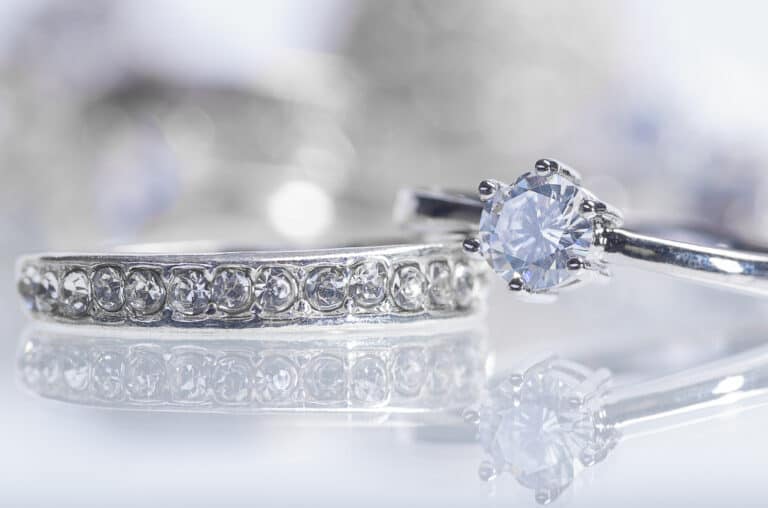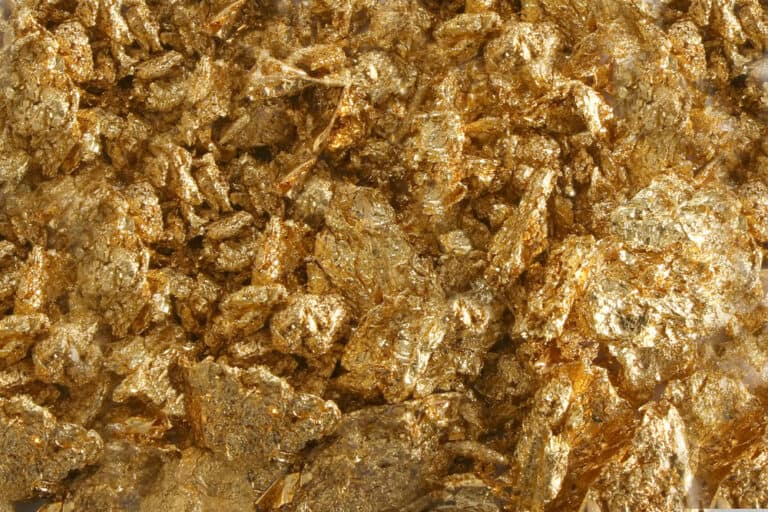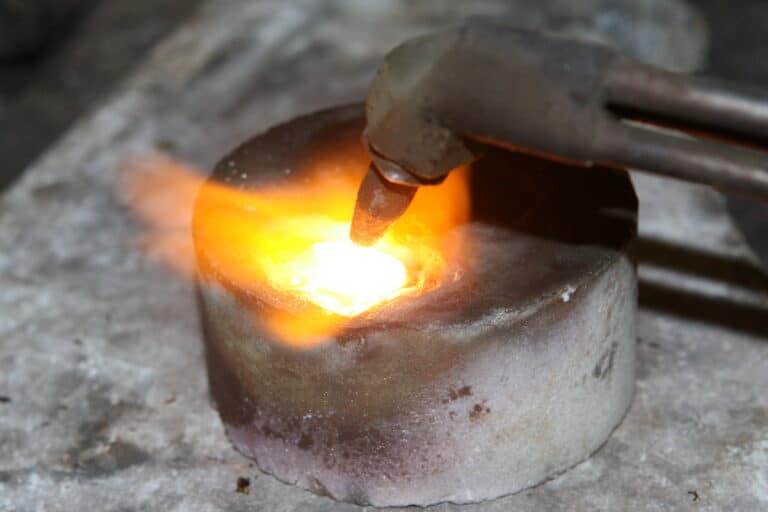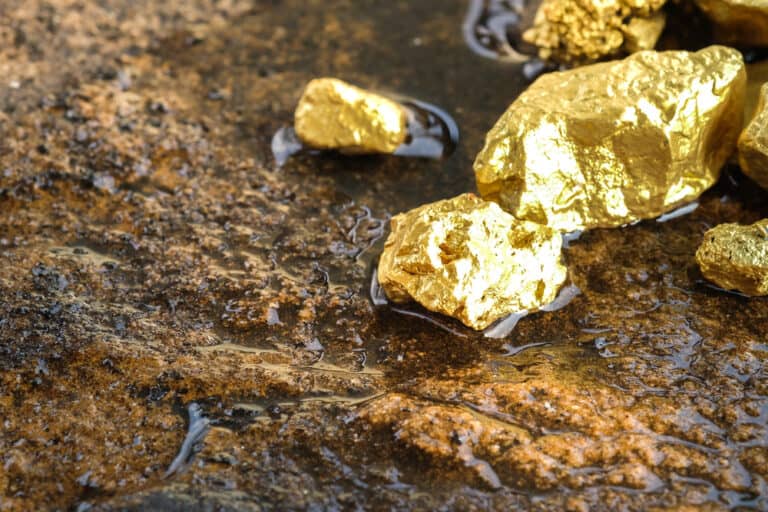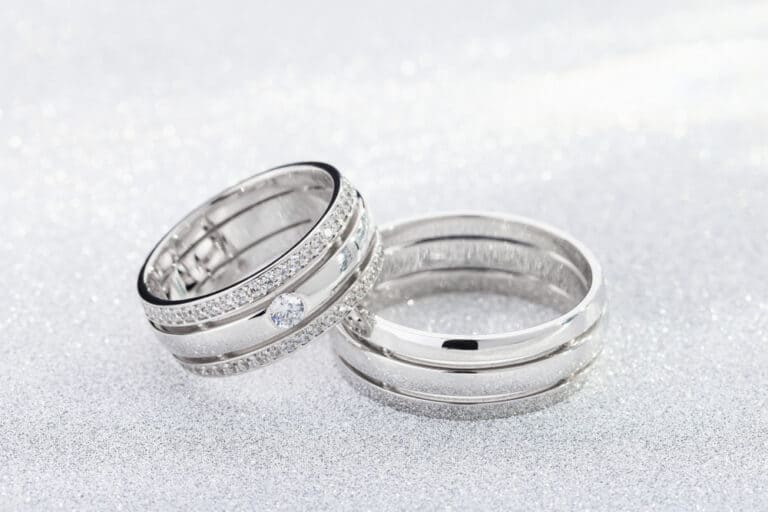Since ancient civilizations ruled, gold and silver have been widely sought-after and coveted precious metals. Despite both silver and gold being minerals that naturally occur in inorganic substances in the earth’s crust, they are not valued the same way. So, which is the rarer precious metal: gold or silver?
Since gold is available in smaller quantities than silver, it is considered the rarer and more valuable precious metal. In 2021 alone, 800% more silver was globally produced than gold. Ultimately, rarity is one of the most important factors determining a precious metal’s value.
We’ll explain everything you want to know more about why gold is rarer than silver – and whether it will always be this way! Once we’ve considered how gold and silver differ in terms of their rarity and value, we’ll discuss the many other ways these precious metals differ.
Is Silver A Rarer Metal Than Gold?
Availability or rarity is one of the most important determining factors regarding the value of precious metals. Essentially, the more abundant a precious metal is, the less it will be valued at. Conversely, the more scarce a metal is, the higher it will be valued. Due to this, we need to consider the availability of these metals to determine which is the rarer metal.
It is estimated that there is nineteen times more silver than gold underground, which means gold is available in smaller quantities and is the rarer precious metal. To help you comprehend how rare gold is, let’s compare the quantities of these metals that have been mined to date.
Currently, more than 1.74 million metric tons of silver have been mined, which does not include silver yet to be mined. However, all the gold that has been mined throughout history and all the gold that will be mined only amounts to 244,000 metric tons.
In 2021, the global production of silver amounted to 24,000 metric tons. For gold, on the other hand, worldwide production amounted to 3,000 metric tons in 2021. Ultimately, this means that 800% more silver was produced than gold in 2021 alone, which truly speaks to the rarity of gold.
Ultimately, the value of precious metals is closely linked to their rarity. If gold suddenly became more available and abundant than silver, there would be a huge drop in the cost of gold, and silver would become the rarer metal. However, until these hypothetical gold deposits are found, gold remains rarer than silver.
Silver VS. Gold: How Do These Precious Metals Differ?
As we explained above, gold is a rarer metal than silver. While rarity is one of the key differences between these precious metals, it isn’t the only difference between them. Besides their rarity, these metals differ in their mining processes, properties, uses, cost, investment options, and more!
Silver VS. Gold: Rarity
When comparing two precious metals, their availability is one of the most important factors determining their value. As we explained in the previous section, gold is available in smaller quantities than silver, making it the rarer of the two.
If you were to rank precious metals, gold would rank 3rd on the list, right behind rhodium (1st place) and platinum (2nd place). On the other hand, silver currently ranks in 9th place, which puts quite the divide between gold and silver in terms of value and rarity.
Silver VS. Gold: Mining
While both silver and gold are mined, the mining processes differ greatly from one another. Silver ore is often obtained through underground and open-pit processes. To mine gold, miners need to use specialized machinery to separate rocks that contain gold ore from rocks with no economic quantities of gold.
Unfortunately, the cost of mining silver exceeds its selling price, which constraints the silver supply. Due to this, silver is often mined as a byproduct of other metals. Overall, these factors make silver less profitable to mine than gold ore.
Silver VS. Gold: Properties
In their purest forms, gold is yellow, while silver is gray in tone. Since both are softer metals, they are often alloyed or mixed with other metals to create stronger compositions. However, gold has a higher density than silver, which means a certain amount of gold can go much further than an equal quantity of silver.
Silver VS. Gold: Uses
While silver is often used to manufacture jewelry and tableware, it is also used for solar technology, medicine, automobiles, electronics, water purification, and more. Due to the availability of silver, it can be found practically anywhere.
On the other hand, gold is commonly used to make jewelry and create investment opportunities. However, gold is also used in electronics, dentistry, medicine, and aerospace. However, the rarity and value of gold somewhat limit its uses – especially when compared to silver.
Silver VS. Gold: Cost
Gold is more expensive than silver. Ultimately, this is due to the availability and rarity of these metals. As we mentioned earlier, there was 800% more silver mined than gold in 2021 alone, which truly speaks to the price difference between these metals.
Silver VS. Gold: Investments
Since ancient civilizations ruled, gold and silver have been recognized as valuable and coveted precious metals. In terms of investment options, gold and silver remain popular choices. However, while silver can be added to your precious metals investment portfolio, gold remains the most popular investment option due to its rarity.
Silver VS. Gold: Status
Finally, let’s discuss the perceived status of gold and silver, which is closely linked to the differences between these precious metals. While both gold and silver are highly valuable commodities, gold has a higher overall status. Gold has been a status symbol representing wealth and power for thousands of years. Ultimately, this status is because gold is regarded as rare, beautiful, and precious.

Conclusion
Gold is considered rarer and more valuable than silver. Ultimately, this is because gold is available in smaller quantities than silver. In 2021, there was 800% more silver globally produced than gold, which truly speaks to the stark difference in the rarity of these precious metals. While more than 1.74 million metric tons of silver have been produced to date, only 244,000 metric tons of gold will ever be produced.
Sources
- https://www.statista.com/statistics/253293/silver-production-volume-worldwide/
- https://www.statista.com/statistics/238414/global-gold-production-since-2005/
- https://www.911metallurgist.com/blog/the-worlds-10-most-precious-metals
- https://www.usmoneyreserve.com/news/executive-insights/what-is-silver-used-for/
- https://www.investopedia.com/articles/basics/09/precious-metals-gold-silver-platinum.asp
- https://www.gold.org/gold-supply/gold-mining-lifecycle
- https://www.globalxetfs.com/silver-explained-2/


